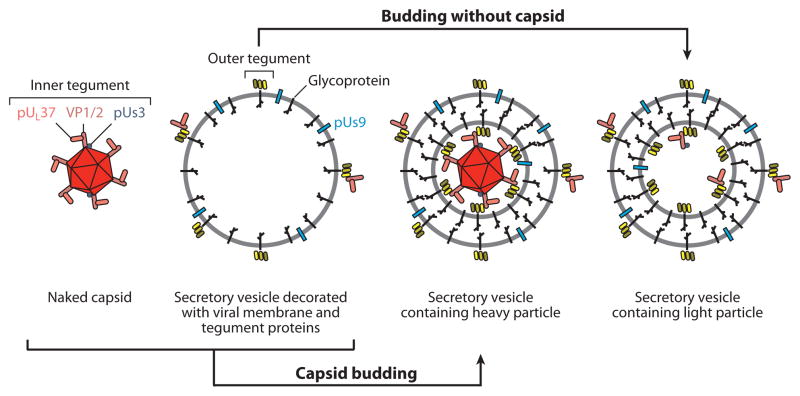Figure 4.
Four types of cytoplasmic viral particles present during the egress stage of infection. Unenveloped (naked) capsids newly egressed from the nucleus acquire inner tegument proteins beginning with VP1/2, which binds capsids directly. The composition of these particles and the retrograde transport complex that is released into the cytosol following entry are similar, if not equivalent (see Figure 3). Outer tegument proteins associate primarily with viral membrane proteins resident in the biosynthetic pathway (secretory vesicle), which may also acquire some inner tegument proteins in the absence of capsids. Membrane proteins consist of glycoproteins and nonglycosylated membrane-associated proteins that include pUs9. Infectious virions (heavy particles) form when capsids bud into membranes decorated with viral membrane and outer tegument proteins and subsequently exocytose from the cell. Light particles are noninfectious secreted viral particles that consist of a viral envelope and tegument proteins but lack a capsid. The three membrane-associated intracellular particles expose membrane protein tails and tegument proteins to the cytosolic surface. Among the exposed proteins, pUs9 is enriched in the vesicle membrane surface and may direct trafficking of particles to the distal axon.

